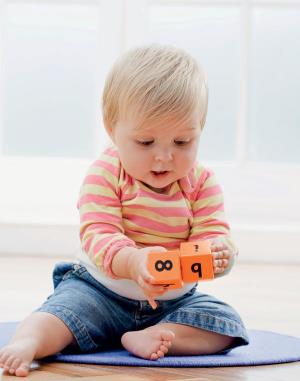
Sensory development
- If your child is sensitive to or avoidant of any sensory system, you need to ensure the toy does not overload his senses. For example, if he is sensitive to touch, choose to buy him sand art crafts rather than a sandpit. As his tolerance grows, upgrade to toys with more sensory input.
- If your child needs a lot of sensory input to activate his alertness, seek sensory rich or multisensory toys.
- Remember to consider the balance and body awareness senses. These require toys which allow movement especially hanging and jumping.
Cognitive development
• Consider the toys that fit to your child’s intellectual, language and perceptual skills. For example, does it require him to follow three step instructions, make more than two option decisions? How much planning, abstract thinking and expressive or receptive language is necessary to play?
Social development
Interaction
- Ask yourself to what degree the toy demands interaction with others.
- Children with special needs are often isolated from siblings and peers. Play is the perfect place to involve others in a non-threatening way. Select toys which encourage interaction between them.
Inclusion
- Help shy children and those who are socially excluded integrate themselves into a group by providing them with popular theme toys such as super heroes or TV characters provide a common ground on which to build social inclusion. Look for different types of merchandise, such as books, craft sets and dress up kits, to expand on this common ground.
Age appropriate
- When you select a toy you need to consider both his developmental and chronological age. You want to ensure it isn’t too advanced for his skill level but you also want to ensure that it isn’t too childish for his age. For example, you may need to buy him Duplo blocks instead of smaller original Lego, to meet his skill level and still allow him to build like the rest of his peer group.
Physical development
- Ensure the toy is robust, easy to clean and resistant to moisture.
- This is vital to children such as those with Autism and Down syndrome who have a limited concept of fear and may use the toy in unconventional, harmful ways.
Motor skills
- Consider his big and small muscle movements, the range of motion he has, whether he has a tremor or balance issues which would be strengthened by such a toy or create serious obstacles to play.
Matters to consider, if your child is wheelchair bound or has Cerebral Palsy, are:
- Space
- Check if the toy will fit on his wheelchair tray.
- Position
- Consider whether the toy is height adjustable and can be used in a variety of positions such as side-sitting or upright kneeling to assist motor ability.
Did you know?
According to UNICEF 10% of children are born with or acquire a disability in their lifetime. In developing countries this statistic increases to 12-20% of children.




 Publications
Publications
 Partners
Partners














